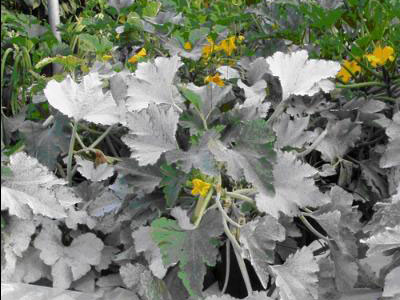Powdery mildew disease is being observed in cucurbits in South Florida, according to the South Florida Pest and Disease Hotline. Infestation is moderate in some squash plantings in southwest Florida.

Pressure is high on mature squash along the east coast. Scouts also report increased infestations in squash fields in Homestead, Florida.
All cucurbits are vulnerable to powdery mildew, though the disease is less common in watermelons.
Symptoms usually appear on older leaves and stems. Yields are reduced due to pre-mature foliage loss. Severe leaf infection can lead to lower fruit sugar content and subsequent reduction of the fruit’s quality. Mildew can also attack the calyx and reduce the fruit’s marketability.
Powdery mildew fungi can reproduce under relatively dry conditions. Increased humidity can increase the severity of the disease, and infection is enhanced during periods of heavy dew. It can become severe during prolonged periods of low rainfall in the winter and spring months.
Crop rotation and other cultural practices have little effect on the incidence and development of the disease. Tolerance or resistance to powdery mildew is available in some vegetables. Most commercial cucumber varieties produced in Florida have acceptable levels of resistance. Many cantaloupe varieties that are used in Florida display some tolerance to powdery mildew.
In addition to resistance, economic control can be achieved with fungicide applications. Under low disease pressure, some materials applied preventatively for downy mildew may provide satisfactory control of powdery mildew. However, under moderate to heavy mildew disease pressure, micronized sulfur (Thiolux) and the strobulurin fungicides such as Flint, Nova and Quadris are recommended. Newer materials such as Pristine and Quintec have also performed well in university trials.









